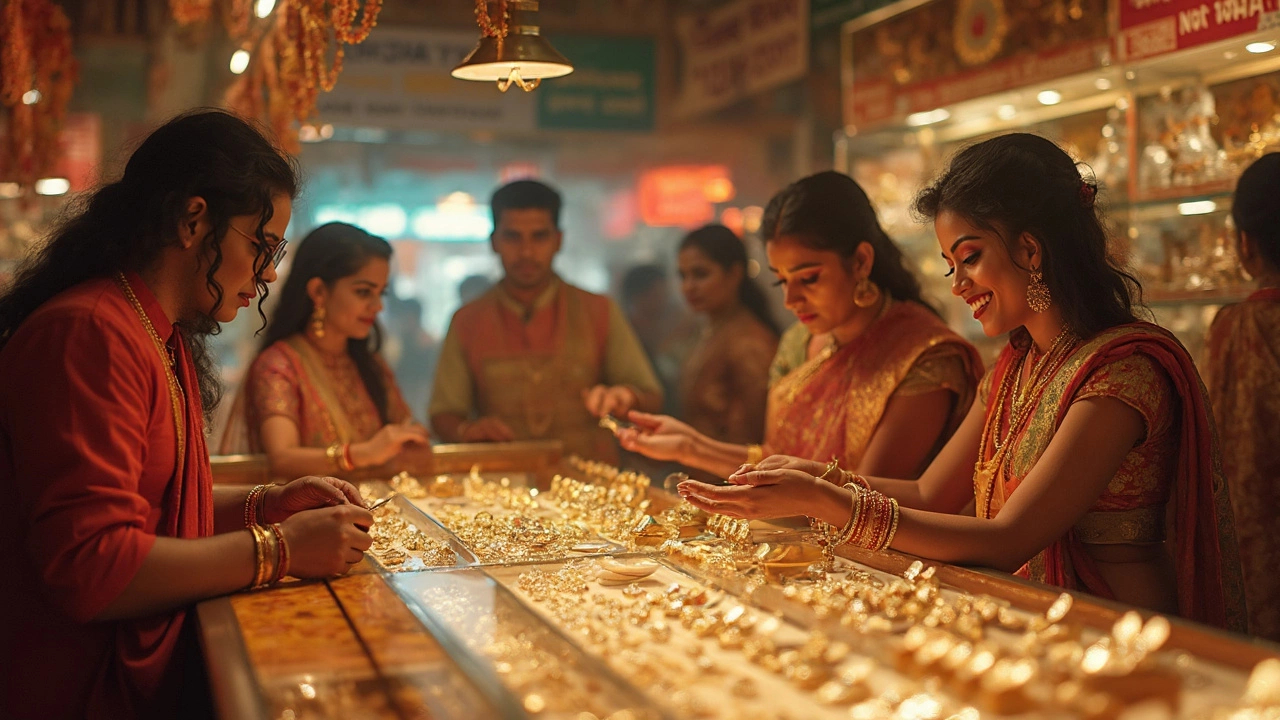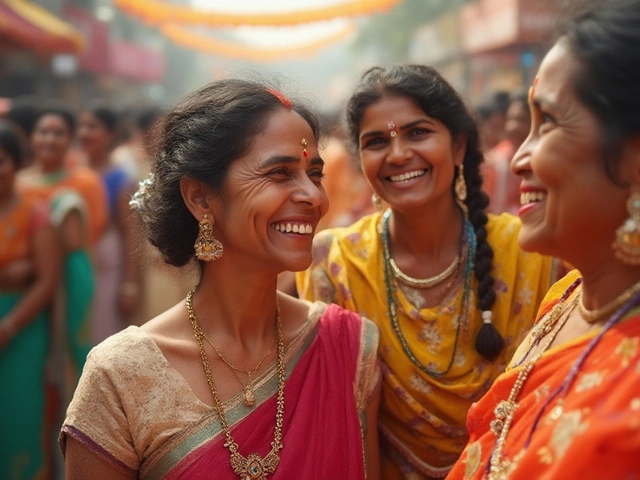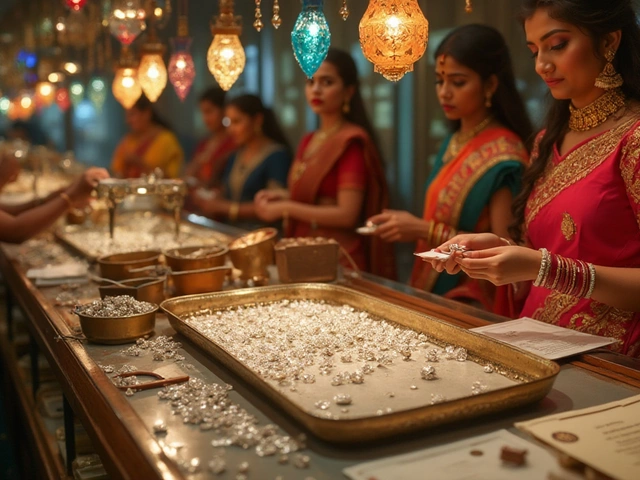
Thinking about buying a diamond and wondering if there’s a secret country where you can score a crazy good deal? You’re not alone. Shoppers from India to the US are always on the hunt for better prices and bigger stones, but getting it right is trickier than it seems.
Here’s the short answer: where you buy does matter, but not always for the reason you think. The diamond market runs on a pretty global price system these days, with the big sites like Antwerp, Dubai, Mumbai, and Tel Aviv setting the tone. Taxes, import duties, and even how much you haggle impact the final price way more than the geography alone.
If you’re hunting for a diamond ring in India, you already have an edge. India is one of the world’s top diamond cutting and trading hubs. That means more selection, generally lower labor costs, and lots of competition keeping prices honest. But it’s not just about cost. You want certification, a good return policy, no hidden fees, and, of course, genuine stones. Sometimes that “bargain” from abroad comes with extra risks or fees that wipe out all your savings.
- Why Diamond Prices Vary Across Countries
- The Real Deal: India vs. Global Diamond Hubs
- Buying Diamonds Abroad: What To Watch Out For
- Smart Tips for Your Next Diamond Purchase
Why Diamond Prices Vary Across Countries
You might think diamonds cost the same everywhere, but that’s not even close. The price tag changes a lot depending on where you buy, thanks to more than just a country’s glamour or history with diamonds. Let’s get into the real reasons.
The biggest factor? Taxes and import duties. Some countries like the UAE and Hong Kong have almost zero import tax on loose diamonds, making them hotspots for buyers chasing good deals. But in places like India, the government sets an import duty that can go as high as 7.5%, plus extra taxes like GST. That bumps up the retail price, especially if you’re eyeing bigger stones. Check out the differences here:
| Country | Import Duty on Diamonds | VAT/GST |
|---|---|---|
| India | 7.5% | 3% |
| UAE (Dubai) | 0% | 5% |
| Hong Kong | 0% | 0% |
| USA | 0% | Varies by state |
| Belgium (Antwerp) | 0% | 21% |
Another reason for price swings is how close a country is to the diamond supply chain. India, for example, isn’t just big in buying, it’s where nearly 90% of the world’s polished diamonds are cut. That keeps the local supply steady and prices competitive. If you buy in Europe or the US, middlemen add their cut, and shipping eats into your savings. That’s real money lost before the rock even hits the shelf.
Local costs add up too. Rent, worker wages, and store markups can mean a fancy shop in New York or London charges way more than a wholesaler in Surat or Dubai’s Gold Souk. On top of that, the brand and where you shop matters—a high-end boutique typically charges more, even for the same quality.
Let’s not forget currency and market demand. If you pay in dollars, euros, or rupees, exchange rates can nudge the price up or down overnight. Super high demand in one market also means prices get pumped up for shoppers there.
If you're out to buy diamond rings (especially in India), knowing these price drivers can help you pick the right country—or even the right city—to get more sparkle for your buck. It pays to understand not just where, but how those hidden costs show up in the final sticker price.
The Real Deal: India vs. Global Diamond Hubs
Everyone wants to know if there’s really a "best country" for buying diamonds. A lot of people hear about places like Antwerp or Dubai and assume that’s where the real bargains are hiding. But what’s actually true when you stack up India against these famous diamond cities?
Let’s start with the facts. India cuts and polishes about 90% of the world’s diamonds by volume. Surat, Gujarat, handles most of this work. When you see a diamond in a ring anywhere in the world, odds are strong it passed through Indian hands at some point. You get the benefit of local supply and lower labor costs when you shop for diamonds in India.
Meanwhile, Antwerp has been the historic heart of the diamond trade—a lot of global wholesale deals still happen there. Dubai and Hong Kong bring low taxes and duty-free zones to the game, attracting bulk buyers and big brands. Tel Aviv is up there too, mostly for trading rough diamonds from Africa and Russia. But here’s the catch for regular shoppers: unless you’re buying huge stones or dealing in bulk, you probably won’t get access to wholesale deals in these markets. Most sales to tourists and retail buyers come with similar markups to anywhere else.
- diamond rings in India often cost less thanks to lower processing and labor costs.
- India’s local tax (GST at 3%) is lower than sales tax or VAT in Europe, which can climb up to 20%.
- Antwerp’s stones look cheap on price tags, but after adding taxes and commissions, the difference shrinks.
- Dubai has no import duties but big-name stores usually add hefty retail markups.
| Country/City | Main Advantage | Typical Taxes/Fees | Best For |
|---|---|---|---|
| India | Direct from manufacturers | 3% GST | Wide choice, lower prices |
| Antwerp | Historic trading hub | Up to 21% VAT for non-EU | Big investment stones |
| Dubai | No import taxes | 5% VAT (tourist refund possible) | Luxury shopping, bulk |
| Hong Kong | Duty-free | 0% tax | High-end stones |
The edge Indians have gets even sharper when you factor in expertise. Many local jewelers will custom-make a ring for you, right down to the fine details—without blowing up the price. The challenge is buying smart: insist on certification (like GIA or IGI), stick to known retailers, and always, always compare prices. That quick check can save you tens of thousands of rupees.
Outside India, you might spot some tempting deals, but returns, after-sales support, and even authenticity get tricky. Once you bring a stone back home, you could be hit with customs and have zero warranty if anything goes wrong. The actual advantage of buying abroad is usually smaller than it seems—especially if you don’t want surprises.

Buying Diamonds Abroad: What To Watch Out For
Jetting off to buy diamonds sounds smart until you see the curveballs. Price can drop if you shop in places like Dubai or Belgium, but hidden fees and paperwork can take you by surprise. Customs in India, for example, can charge 7.5% import duty on diamonds brought in as personal items—and that’s before you even talk about GST or jewelry-specific taxes. If you skip the paperwork or try to sneak a diamond through, it’s seized, no questions asked.
Let’s talk about quality for a minute. Many countries outside India don’t follow the same grading standards or offer locally recognized certificates. If you get a diamond with only a local or unfamiliar lab’s report, selling it back home could be tricky—Indian buyers prefer GIA or IGI certification. Here’s a simple breakdown of what matters when buying abroad:
- Always get a written invoice and internationally recognized certificate (GIA or IGI).
- Check return and exchange policies, especially if shopping at tourist hotspots.
- Explore warranty options and local support, in case you need repairs or changes back in India.
- Compare the final cost—after taxes, shipping, and duties—with quotes from reputable Indian stores.
Keen on actual numbers? This table shows typical import duties and taxes when bringing diamonds into India from popular buying destinations (as of 2025):
| Country | Import Duty (%) | VAT/Sales Tax (%) | Other Fees |
|---|---|---|---|
| Dubai (UAE) | 7.5 (upon entering India) | 0 | GST 3% in India |
| Belgium (Antwerp) | 7.5 (upon entering India) | 21 | Sometimes refundable on export |
| USA | 7.5 (upon entering India) | ~6-10 (state based) | GST 3% in India |
It might look tempting to buy where diamond rings seem cheaper, but once you add it all up, the savings often shrink or vanish. Plus, if you need after-sales help or want to return the stone, you’re dealing with a foreign company. If you really want to buy abroad, research all costs, demand top-notch paperwork, and don’t risk anything that isn’t 100% legit.
Smart Tips for Your Next Diamond Purchase
Anyone can get overwhelmed by the diamond game, but there’s a proven way to take the guesswork out before you drop serious cash—especially if you’re shopping for diamond rings in India or anywhere else. The goal? Get the real deal at a price that won’t haunt you later.
- Certification matters. Don’t buy any diamond without a certificate from a known lab. In India and worldwide, you’ll see GIA, IGI, and HRD a lot—these are reputable and widely trusted. This paper proves the diamond’s quality and carat is exactly what’s promised.
- Understand the 4 Cs. Always look at Carat, Cut, Color, and Clarity. For rings, a good cut matters most (it makes the stone sparkle). Don’t just chase bigger size—sometimes a smaller diamond with better cut and clarity steals the show.
- Know the local taxes and import duties. Buying in India often spares you the steep import costs others face. If you buy abroad, figure out what you’ll pay when bringing it home—unexpected taxes can kill your savings.
- Bargain, but stay realistic. Indian markets are known for haggling. It’s part of the culture, but any crazy low price is usually a red flag. Trustworthy jewelers won’t mind a bit of bargaining, but won’t sell diamonds for way below global rates.
- Look up return and buyback policies. Things happen—styles change, or maybe you want to upgrade one day. See if the shop offers strong return or exchange deals. In India, top retailers like Tanishq and PC Jeweller often guarantee simple returns and sometimes even buybacks.
Wondering what Indians actually pay for diamonds compared to the world? Check this out—
| Country | Avg. Price (1ct, G VS1, GIA) | Typical Sales Tax/Duty |
|---|---|---|
| India | ₹2,00,000-₹2,60,000 | GST 3%, no import duty on domestic stones |
| USA | ₹2,40,000-₹3,00,000 | Sales tax 0-10% (state-wise), import duties on foreign stones |
| Belgium | ₹2,10,000-₹2,70,000 | VAT 21% |
| UAE (Dubai) | ₹2,00,000-₹2,50,000 | VAT 5% |
Always ask for everything in writing, including appraisals. Keep digital copies for any future claims or insurance.
If you want extra peace of mind, stick to shops that belong to the Gem & Jewellery Export Promotion Council (GJEPC) in India, or check reviews on Google Maps or Trustpilot. Watch out for pushy sellers and never feel rushed—if a deal sounds too good to be true, walk away.


